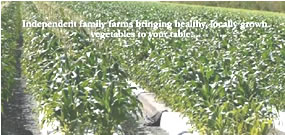After hearing surprising revelations from the public, the Palm Beach County Planning Commission has unanimously refused to recommend a county commission proposal that would make it easier for housing developers to break up large, preserved land parcels in the Ag Reserve.
With the 13 to 0 vote, the rule now goes back to the generally pro-development Board of County Commissioners (BCC). The fight for public interest will continue at the BCC’s zoning meeting on June 25 and the BCC’s hearing on July 30.
Citizens and Public Interest Groups Made a Stunning Case
A barrage of investigative findings and research from citizens and public interest groups and attorneys proved a stunning setback for developers and agents who showed up to argue for the Planning Commission’s blessing.
This proposed rule allows builders like giant G.L. Homes to substitute large Preserve Parcels with non-contiguous, multiple slivers of less valuable land.
The Master Plan of the Ag Reserve purposely establishes preservation areas to have a common boundary with other agricultural lands or open space to protect crop production, pasture, fallow land or equestrian purposes.
Farmland owners in the Ag Reserve must set aside 60 to 80 percent of their land for these adjoining preservation areas as a condition for developing or selling their remaining land for development. Regardless of the ratio, the parcels must be no less than 150 acres and the preserved parcel must be contiguous to another preserved parcel.
The unintended consequences of relaxing the contiguous protection hit home with testimony after testimony at the Friday, June 12, Planning review.
Palm Beach County citizen Russ Martin explained how GL Homes would be free to develop the whole 586 acres of Whitworth Farm if it were to buy the property in the future.
Attorneys Robert Hartsell of 1000 Friends of Florida and Lisa Interlandi of the Everglades Law Center hit home further, showing how the change could actually allow developers to take back existing large Preserve Parcels and substitute less valuable slivers of land.
Taking back a parcel has happened at least once already. In January, BCC gave special permission to GL Homes to take back a Preservation Parcel of 262 acres in active crop row production and substitute 22 disjointed pieces of land pieced together. The substitution made it more configurable for the builder’s Valencia Cove South development.
Citizen Pamela Marten countered farm owners’ testimony from the March 24 BCC workshop that the Ag Reserve soil is nothing special and freezes are common. She entered evidence to the contrary from the Federal Government’s National Oceanic Atmospheric Administration (NOAA).
Nothing close to a hard freeze had happened in the Ag Reserve in the last quarter century. She explained that the Ag Reserve contained the warmest farming soils on the Eastern Seaboard in freezing winter months, that it was a County treasure and must be protected from assaults by developers.
Making powerful cases and findings were Drew Martin, Chair of the Conservation Committee of Sierra Loxahatchee Group and Paton White, President of the Audubon Society of the Everglades, along with supporters of grassroots group STAR: Save the Ag Reserve.
About the Ag Reserve
The Ag Reserve encompasses 20,923 acres of southern Palm Beach County. It lies between Hypoluxo Road (extended) on the north, Clint Moore Road on the south, the Ronald Reagan Turnpike on the east, and the Arthur R. Marshall Loxahatchee National Wildlife Refuge on the west.

